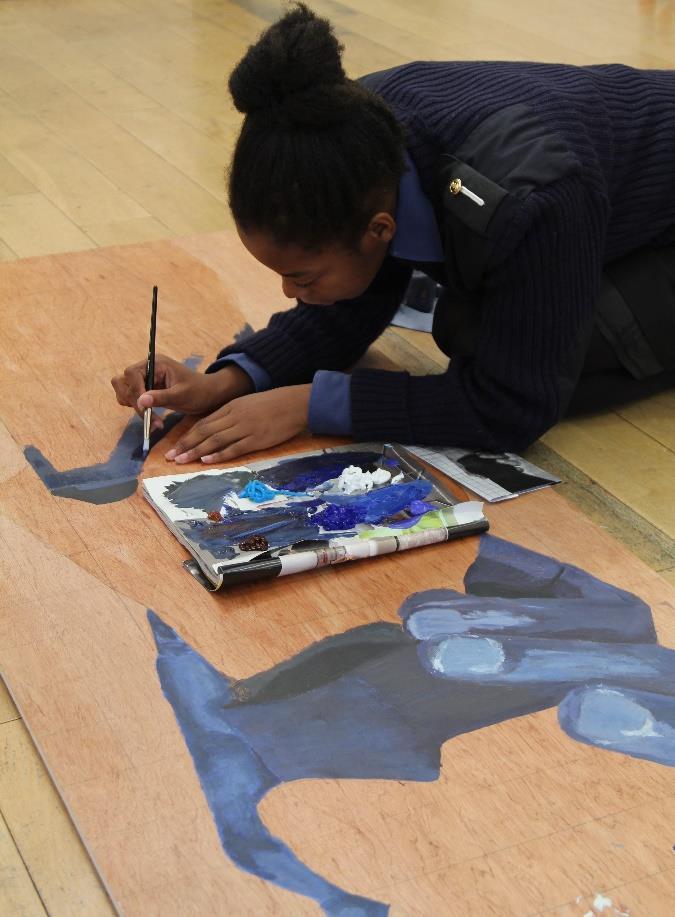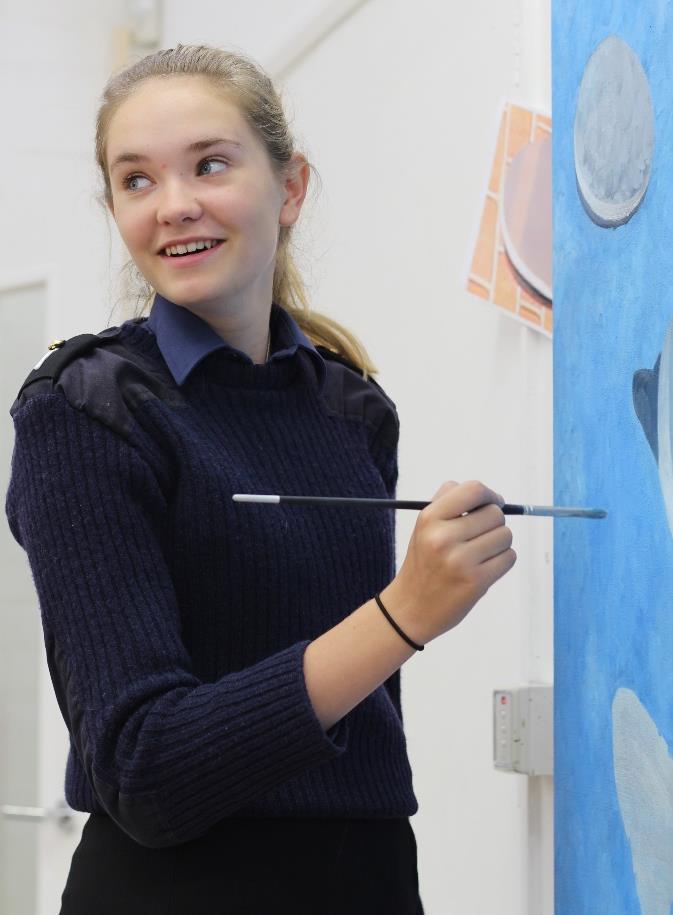
3 minute read
Art
Art Scholarships and Exhibitions (Year 9 & Sixth Form)

Advertisement

WHAT DOES IT TAKE TO BE AN ARTS SCHOLAR?
Art and Design scholars are people with creative and technical flair, they are also intellectually inquisitive and flexible. We look for pupils who want to investigate ideas and materials and who love making their ideas visible through art.
Successful scholars of Art and Design will show a combination of skill, curiosity, and enthusiasm. They can expect to be given opportunities to develop and thrive in a creative environment and become the artistic leaders of their year groups.

WHAT ARE THE BENEFITS OF BEING A PANGBOURNE SCHOLAR?
Art Scholars have access to the full range of extracurricular opportunities provided by the department, from open studios to one-to-one tuition. They are role models for those around them and are the first to be called upon for special projects or exhibitions.
All scholars are invited to attend the annual Scholar’s Dinner in February. This is a highly prestigious and enjoyable event in the College calendar.
WHAT DO WE EXPECT OF A PANGBOURNE SCHOLAR?
Art Scholars are expected to contribute fully to the creative life of the College. They are expected to take Art at GCSE level, and holders of Sixth Form Art Scholarships are expected to take Art at A Level.
WHAT IS THE SELECTION PROCESS?
YEAR 9
Pupils who wish to apply for an art scholarship should prepare a portfolio of about 10 images that represent both the range and quality of their work. A sketchbook to accompany these pictures is a good idea, but the most important thing is to be prepared to talk about the work submitted.
Each candidate should produce a portfolio. The portfolio should contain a range of work that demonstrates skill in both 2D and 3D forms. Three dimensional work should be photographed rather than brought along to the College. There should be evidence of work that responds to the work of others (artists, designers, or craft persons) and where possible responds to a gallery trip.
During the scholarship assessment day, pupils will take part in a practical task that will involve working from direct observation using selected media and materials. They will also discuss their portfolio with a member of the Art Department and answer a range of art related questions. These questions are not employed to test the pupils but to enquire about their interest in art.
SIXTH FORM
Candidates are expected to bring a portfolio of work completed over the previous two years. Any items from the following list are welcome: 1. 3D work: sculpture, potter, models. (photographs may be supplied) 2. Design or craft work: posters, packaging, pattern illustration, calligraphy. 3. Drawing and painting from direct observation from nature.
This work will be discussed with the candidate. Those who have visited exhibitions, watched TV Art programmes, and read books on any aspect of the arts will be at an advantage.

WHAT DO OUR CURRENT SCHOLARS SAY?
‘Being an Art Scholar has really allowed me to flourish. I enjoy the interaction with my teachers and the additional support that they have given me’.
WHAT DOES AN EXHIBITION HOLDER RECEIVE?
Exhibitioners can also expect to receive enhanced opportunities to take part in extracurricular activities and exhibitions. They too act as role models for those around them and are given the support needed to develop their full potential.



